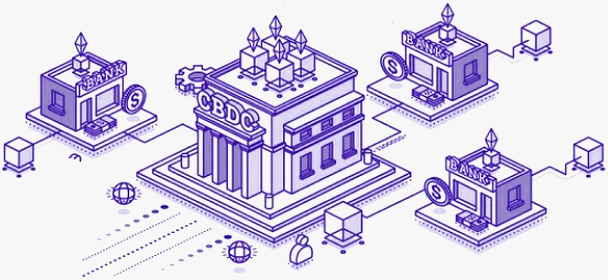Accredited InvestorsAltcoinAnatoli UnitskyAnti-Money Laundering (AML) In CryptoAPIArbitrageArtCoin TokenArticle DirectoryASICAuction Terminology GlossaryBasics of Stock Market InvestingBear MarketBest Crypto Payment Provider In the WorldBitcoinBlockchainBlockchain ConfirmationBlockchain Consensus MechanismBlockchain ForkBlockchain GlossaryBored Ape Yacht ClubBuild a Business That OutperformsBull MarketBuying SkyWay SharesByzantine Fault Tolerance (BFT) ExplainedCasascius CoinCentral Bank Digital Currency (CBDC)Centralized Crypto ExchangeCoinCoinsetCold WalletCollateralCommodity Futures Trading Commission (CFTC)Cross-Chain TechnologyCRUCrypto ExchangeCrypto GlossaryCrypto JokesCrypto Terms to KnowCrypto TickerCryptocurrencyCryptographyCryptojackingCryptounit BlockchainCryptounit GlossaryCryptounit ProgramdApp (Decentralized Application)Dead CoinDecentralized Exchange (DEX)Decentralized Finance (DeFi)Difference Between Bitcoin and EthereumDifferent Ways of Investing MoneyDigital CurrencyDistributed LedgerDo Your Own Research (DYOR)Dollar Cost Averaging (DCA)Dow Jones Industrial Average (DJIA)EncryptionERC-20ERC-721EthereumEvoScentFear Of Missing Out (FOMO)Fear, Uncertainty and Doubt (FUD)Fiat MoneyFNT Fintech CompanyGenesis BlockGlobal Unit PayGlossary of Banking TermsGlossary of Business TermsGlossary of Financial TermsHalvingHODLHot WalletHow Do I Start InvestingHow Rich is Satoshi Nakamoto?How to Create a BlockchainHow to Find Private InvestorsHow to Get Into FintechHow to Program Smart ContractsI Am Thrilled to Be a Part of This Global ProjectInitial Coin Offering (ICO)Initial Public Offering (IPO)Initial Token Offering (ITO)Innovation Basalt TechnologyInnovative Transportation TechnologiesInternational Bank Account Number (IBAN)Investing in Gold Mining StocksInvesting in Gold MiningJagerJoy of Missing Out (JOMO)Know Your Customer (KYC)LedgerLiquidity in CryptocurrencyMaker and Taker Fees in Crypto TradingMarket Capitalization (Market Cap)Meme CoinMetal Credit CardMetaMaskMillenials Now Have Access to Generational WealthMy Best Investment EverNew Digital EvolutionNFT GlossaryOff-Chain TransactionsOn-Chain TransactionsOpen Edition NFTPeer-to-Peer (P2P)Personal Loan GlossaryProbably the Best STO on the MarketProof of Stake (PoS)Real Estate Glossary of TermsReal Estate Investing GlossaryRebase TokenSecurities and Exchange Commission (SEC)Security Token ExchangesSecurity Token Offering (STO)Soulbound Decentralized Identities for Security TokensSoulbound ID Launch by Stobox Proves a SuccessSoulbound TokensStoboxStock Market GlossaryTestimonialsTether Platform and Token (USDT)UnitEx ExchangeUnitsky String TechnologiesUNTBUSDUValidatorWe Started Investing When We Were 25What are Blue Chip NFT?What are Blue Chip Stocks?What are Crypto Assets?What are Crypto Smart Contracts?What are CryptoPunks NFT?What are Digital Assets?What are Digital Collectibles?What are Gas Fees?What are Gas Wars?What are Hashmasks?What are Non Fungible Tokens?What are Non-Sufficient Funds (NSF)?What are Soulbound Tokens (SBT)?What are Stablecoins in Crypto?What are Transactions Per Second (TPS)?What are Utility NFTs?What are Utility Tokens?What Does Burning Crypto Mean?What Does Diamond Hands Mean?What Does Paper Hands Mean?What Does To The Moon Mean?What Does WAGMI Mean?What Happened to Satoshi Nakamoto?What is a 51% Attack?What is a Baby Boomer?What is a Backlink?What is a Banner?What is a Barcode?What is a Bid-Ask Spread in Crypto?What is a Block in Blockchain?What is a Block Reward?What is a Blockchain Address?What is a Blockchain Node?What is a Blockchain Oracle?What is a Blog?What is a Bond?What is a Bot?What is a Broker?What is a Business Accelerator?What is a Cash Cow?What is a Commercial Bank?What is a Commodity?What is a Con?What is a Credit?What is a Credit Limit?What is a Credit Rating?What is a Crypto Airdrop?What is a Crypto Bridge?What is a Crypto Scam?What is a Crypto Token?What is a Crypto Wallet?What is a Crypto Whale?What is a Crypto Winter?What is a Cryptocurrency Public Ledger?What is a Cryptocurrency Roadmap?What is a DAO?What is a Dark Pool?What is a Day Trader?What is a Dead Cat Bounce?What is a Default?What is a Derivative?What is a Digital Credit Card?What is a Fiscal Quarter?What is a Fungible Token?What is a Governance Token?What is a Grace Period?What is a Hard Fork?What is a Hot Wallet?What is a Hybrid Blockchain?What is a Hybrid PoW/PoS?What is a Joint Account?What is a Market Cap?What is a Merkle Tree in Blockchain?What is a Mining Farm?What is a Nonce? What is a PFP NFT?What is a POS System?What is a Prepaid Card?What is a Private Blockchain?What is a Private Key?What is a Public Blockchain?What is a Public Key?What is a Reserve Currency?What is a Ring Signature?What is a Routing Number?What is a Rug Pull in Crypto?What is a Safe Deposit Box?What is a Satoshi?What is a Security Token?What is a Seed Phrase?What is a Shitcoin?What is a Sidechain?What is a Soft Fork?What is a Spot Market?What is a State Bank?What is a SWIFT Code?What is a Tax Identification Number (TIN)?What is a Time Deposit?What is a Transaction Account?What is a Variable Interest Rate?What is a Virtual Assistant (VA)?What is a Virtual Card?What is a Virtual Currency?What is a Visa Card?What is a Whitelist in Crypto?What is a Whitepaper?What is Accounts Payable (AP)?What is AMA in Crypto?What is Amortization?What is an Accrual?What is an ACH Transfer?What is an Actuary?What is an Addendum?What is an Algorithm?What is an Angel Investor?What is an Annuity?What is an Asset?What is an ATM?What is an Atomic Swap?What is an Audit?What is an Avatar?What is an EIN?What is an Embargo?What is an Entrepreneur?What is an IDO (Initial Dex Offering)?What is an Interest Rate?What is an Internet cookie?What is an Investment Bank?What is an NFT Drop?What is an NFT Floor Price?What is an Ommer Block?What is an Orphan Block?What is an Outstanding Check?What is an Overdraft?What is Artificial Intelligence (AI)?What is B2B (Business-to-Business)?What is B2G (Business-to-Government)?What is Bartering?What is Bitcoin Dominance?What is Bitcoin Pizza Day?What is Blockchain Immutability?What is Blockchain Used For?What is BRICS?What is Business-to-Consumer (B2C)?What is C2C (Customer to Customer)?What is Capitalism?What is Catfishing?What is CFD Trading?What is Check Kiting?What is Cloud Mining?What is Communism?What is Content Marketing?What is Decentralization in Blockchain?What is DeFi in Crypto?What is Delisting?What is Depreciation?What is Digital Marketing?What is Diversification?What is Double Spending?What is Dumb Money?What is Dumping?What is Earnings Per Share (EPS)?What is Economics?What is Email Marketing?What is Equity?What is Etherscan?What is Fintech?What is Foreign currency?What is Forex?What is Fundamental Analysis (FA)?What is GameFi?What is Generative Art NFT?What is Gwei?What is Hard Currency?What is Hash Rate?What is Hashing in Blockchain?What is Inflation?What is Initial Game Offering (IGO)?What is Interest?What is Interest Income?What is Mainnet?What is Mastercard?What is Metaverse in Crypto?What is Mining in Cryptocurrency?What is Minting NFT?What is Mobile Banking?What is Money Laundering?What is NFT Alpha?What is NFT Metadata?What is NFT Rarity?What is NGMI Meaning?What is Nominal Interest Rate?What is Online Banking?What is Open-End Credit?What is OpenSea NFT Marketplace?What is Personal Identification Number (PIN)?What is Play-to-Earn?What is Polygon?What is Proof of Authority (PoA)?What is Proof of Work (PoW)?What is Public Key Cryptography?What is Pump and Dump?What is Quantum Computing?What is Refinancing?What is Retail Banking?What is Ripple?What is Sharding?What is Slippage in Crypto?What is Smart Money?What is Solvency?What is Soulbound ID?What is SSL?What is Staking in Cryptocurrency?What is Technical Analysis (TA)?What is Testnet?What is the Ask Price?What is the Better Business Bureau (BBB)?What is the Bid Price?What is the Dark Web?What is the InterPlanetary File System (IPFS)?What is the Gold Standard?What is the Lightning Network?What is the Prime Rate?What is the Sandbox?What is the Secondary Market?What is the World Bank?What is Tier 1 Capital?What is Tokenomics?What is TRC-20?What is Universal Banking?What is Unspent Transaction Output (UTXO)?What is Usury?What is Volatility in Crypto?What is Wash Trading?What is Web3?What is Whisper?What is XRP?What is Zero-Knowledge Proof (ZKP)?Who is Beeple?Who is Satoshi Nakamoto?Who is Vitalik Buterin?Why Tokenization is a Safe HavenWhy You Should Try Your Hand at Trading
Central Bank Digital Currency (CBDC)
- Home
- Glossary of Banking Terms
- Central Bank Digital Currency (CBDC)
The concept of a Central Bank Digital Currency (CBDC) has gained significant attention in the financial world.

Since the advent of cryptocurrencies, banks, institutions, and governments have been studying the economic and technical feasibility of introducing a new type of digital money, as well as assessing its potential impact on monetary and fiscal policies.
What is a Central Bank Digital Currency (CBDC)?
As the name suggests, a CBDC is a digital currency issued by a central bank, which can be used as a legal tender alongside traditional physical currencies like banknotes and coins.
The primary objective of introducing a CBDC is to provide a secure, efficient, and cost-effective alternative to traditional payment systems. Unlike cryptocurrencies such as Bitcoin and Ethereum, which operate on a decentralized system, CBDCs are designed to be centralized and fully backed by the issuing central bank.
The use of CBDCs has the potential to transform the way we conduct transactions, as they offer numerous benefits over traditional payment systems. For instance, CBDCs can be used to make instant and low-cost transactions, which can be settled in real-time. This could be particularly useful in cross-border transactions, where traditional payment systems can take several days to process.
Moreover, CBDCs can also provide financial inclusion to individuals and businesses who do not have access to traditional banking services. With a CBDC, they can store their funds in a digital wallet and use them for transactions, just like traditional bank accounts.
In addition, CBDCs can also enhance the transparency of monetary policies. The central bank can monitor the circulation and usage of CBDCs, which can help them in their decision-making process regarding monetary policies, such as interest rates and money supply.
Overall, CBDCs represent a significant development in the world of finance and could have a profound impact on the global economy. However, there are also concerns regarding their implementation and potential risks, such as cybersecurity threats, and the impact on financial stability. Therefore, further research and analysis are required to fully understand the potential benefits and drawbacks of CBDCs.
The Significance of Central Bank Digital Currencies
Central Bank Digital Currencies have garnered attention due to their potential to revolutionize the global financial system. While cryptocurrencies have primarily been viewed as a store of value, CBDCs are seen as a viable mainstream payment option.
The idea of digital currency has been around for over 25 years, with central agencies being the first to issue digital currencies such as DigiCash and e-gold. However, the introduction of Bitcoin in 2009 changed the model significantly by establishing a decentralized blockchain-based ledger for transaction execution and creating a currency independent of any sovereign monetary authority.
The COVID-19 pandemic has brought the importance of digital money to the forefront, with the shift to digital payments and concerns about financial exclusion. This has resulted in major central banks worldwide competing to deliver the first genuine version of digital money, with China experimenting with a digital Renminbi and Europe announcing the creation of a digital euro.
CBDCs are more than just a digital replica of traditional notes and coins. They are seen as programmable money, providing a vehicle for monetary and social policy, limiting their use to fundamental necessities, specific areas, or defined periods. In addition to solving the challenge of financial inclusion, CBDCs can have various implications for payment systems, monetary policy transmission, and the financial system's structure and stability.
As technology platforms integrate digital private money into the US payments system, the Federal Reserve is speeding up its research and public engagement on CBDCs. The significance of CBDCs lies in their potential to bring secure, quick, and low-cost payments to everyone, and their ability to transform the way we conduct transactions.
The Two Types of Central Bank Digital Currencies
CBDCs can be broadly categorized into two types: wholesale and retail CBDCs. Each type has its own unique features and implications for the financial system.
Wholesale CBDCs are primarily used by financial institutions and function similarly to holding reserves in a central bank. The central bank grants an institution an account to deposit funds or use to settle interbank transfers. Monetary policy tools such as reserve requirements or interest on reserve balances can be used to influence lending and set interest rates.
Retail CBDCs, on the other hand, are government-backed digital currencies used by consumers and businesses. They provide a safer alternative to private digital currencies by eliminating intermediary risk. Retail CBDCs are further classified into two types based on how individual users access and use their currency:
- Token-based retail CBDCs are accessible with private/public keys, enabling users to execute transactions anonymously.
- Account-based retail CBDCs, on the other hand, require digital identification to access an account.
Each type of Central Bank Digital Currency has its own set of advantages and disadvantages. While wholesale CBDCs can help in reducing settlement times and costs, retail CBDCs can provide greater financial inclusion and consumer protection. The successful implementation of CBDCs could significantly transform the financial system, and understanding their various types is crucial in evaluating their potential impact.
Advantages and Disadvantages of CBDCs
Central Bank Digital Currencies have both potential benefits and drawbacks, as outlined below:
Advantages:
- More efficient and secure payments: CBDCs could offer faster, cheaper, and more secure transactions, benefiting all parties involved.
- Direct access to central bank funds: In countries with retail CBDCs, consumers could access central bank funds directly, potentially benefiting the large unbanked population.
- Elimination of commercial bank risk: CBDCs could eliminate the risk of storing money with commercial banks, offering safety as long as the country's central bank is stable.
- Easy tracking: CBDC transactions are recorded on a digital ledger, which could help authorities detect fraud and illicit activities.
Disadvantages:
- Central bank control: Central banks would have complete control over CBDCs, potentially imposing restrictions on transaction types.
- Privacy concerns: Central banks would have access to transaction and user data, raising privacy issues.
- Slow adoption: It may take time for CBDCs to gain widespread adoption, with some people lacking access or trust in digital currencies.
- Competition with commercial banks: Retail CBDCs could lead to a significant reduction in business for commercial banks, potentially impacting the stock market.
CBDCs vs Cryptocurrencies: Understanding the Differences
CBDCs and cryptocurrencies may seem similar at first glance, but they have several key differences. One of the most notable distinctions is decentralization, which is a defining feature of many cryptocurrencies like Bitcoin. Cryptocurrencies operate on a decentralized network where transactions are verified and recorded by multiple entities. In contrast, a CBDC is a digital currency that is issued and controlled by a central bank or government.
Another difference is transparency and permission. Many cryptocurrencies operate on public blockchains where transactions are transparent and self-governed. However, CBDCs are likely to operate on private blockchains and be controlled by central banks or governments.
Identity verification is also a notable difference. With cryptocurrencies, users can choose how much personal information they want to reveal and may not need to disclose their identity at all. But with CBDCs, central banks may require users to provide personal information for record-keeping and tax purposes.
Additionally, while some cryptocurrencies are pegged to fiat currencies, a CBDC is not pegged to any other currency. Instead, it is a digital version of the fiat currency issued by the central bank. Thus, a Central Bank Digital Currency of the United States Dollar would be equal in value to a printed fiat United States Dollar.
The Future of CBDCs: Examples from Around the World
As central bank digital currencies gain popularity, countries around the world are exploring their potential. Here are some examples of CBDC projects in various countries:
China: Digital Yuan - China's central bank, the People's Bank of China, began developing the digital Yuan in 2014. In 2020, the bank announced a prototype and conducted pilot trials in two cities. The digital Yuan is expected to have a significant impact on China's $27 trillion payment market.
Sweden: e-krona - In 2017, the Swedish Riksbank initiated a CBDC project called e-krona, in collaboration with Accenture PLC. A pilot was conducted from 2020 to February 2021, and the project has been extended until February 2022. The e-krona aims to provide a reliable payment alternative in case of emergencies.
Bahamas: Sand Dollar - The Bahamas launched their Central Bank Digital Currency project, Sand Dollar, in 2020, with trials in two districts. Each Sand Dollar is equal to one Bahamanian dollar and pegged at 1:1 to the US dollar. The project aims to provide inclusive access to financial services.
Eastern Caribbean Area: DXCD - The Eastern Caribbean Central Bank launched the DXCD CBDC project to provide a retail payment system for citizens without credit cards. It is currently being tested in several countries, including Antigua and Barbuda.
Marshall Islands: Sovereign - The Republic of the Marshall Islands plans to introduce the Sovereign CBDC as a legal tender to improve payment system efficiency. The cost of printing cash exceeded its benefits, and the Sovereign will act as an alternative digital currency.
Other countries are also piloting Central Bank Digital Currency projects. For example, Nigeria recently launched eNaira, and India is testing its CBDC. A well-designed CBDC could revolutionize the current fractional reserve system, replacing it with a narrow banking system overseen by the central bank. CBDCs would provide a secure payment and settlement asset, allowing for an integrated open finance architecture while maintaining democratic control over the currency.
The Bottom Line
Central banks are dedicating considerable efforts and attention to central bank digital currencies, indicating that they will become a reality soon. The introduction of CBDCs will not only boost cryptocurrency adoption by providing platforms to convert digital currencies into legal tenders, but it will also aid in financial inclusion for bankless populations.
CBDCs will have far-reaching implications on the future of finance, including the buying and selling of digital assets and securities. The question that remains is when CBDCs will be fully implemented. This answer depends on the establishment of a dedicated legal framework that promotes transparency, distribution, and issuance of a digital form of money by governments worldwide.
As regulators and central banks take concrete steps in establishing CBDCs, the world will begin to embrace digital currencies as the new standard.
Related Articles

Security Token Offering (STO)
More names will emerge as blockchain continues to play an increasingly important role in payment systems, including CBDCs (Central bank digital currencies) and stablecoins, as well as in the...

What is a Private Blockchain?
Private blockchains have several use cases, including Central Bank Digital Currencies (CBDCs). CBDCs are digital versions of a country's fiat currency and are expected to be the...

What are Digital Assets?
Central bank digital currencies (CBDCs) are digital versions of fiat currencies, issued and backed by central banks.

Digital Currency
Central bank digital currencies (CBDCs) - are digital currencies that are backed and controlled by a government, or central bank, such as the Federal Reserve, and are legal payment in the...
- Home
- Glossary of Banking Terms
- Central Bank Digital Currency (CBDC)